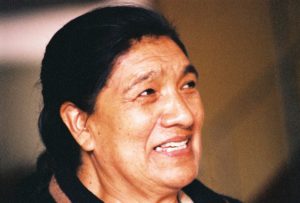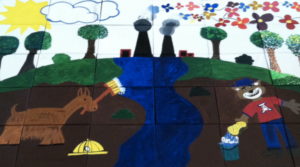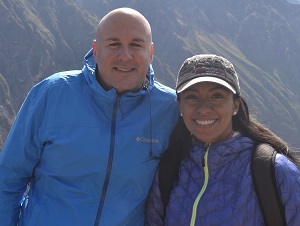Mission Stories: Accompaniment by Jed Koball
A few weeks after arriving to Peru a local TV reporter asked me for an interview. It was early 2009. I had been sent by the Presbyterian Church (USA) as a mission co-worker to accompany our global partner Red Uniendo Manos Peru who had invited me to walk with them in their decade-long cause. In the ten years previous to my arrival, the PC(USA) had been partnering with Red Uniendo Manos Peru in addressing the grave injustice in the Andean town of La Oroya, Peru where 99% of the children had been shown to have severe lead poisoning due to the toxic emissions from a metallurgical smelter owned by a U.S. holding company. It is considered one of the five most contaminated cities in the world. In late 2008 the world experienced the impacts of the U.S. financial crisis, including temporary dips in metal prices. And, in January of 2009 the U.S. holding company claimed its investment in Peru – the smelter in La Oroya – was going bankrupt and that it would have to shut it down, ending jobs for about a thousand workers. However, the holding company claimed that the reason for the bankruptcy was not in relation to the financial crisis and falling metal prices; rather, it argued that it was due to costly environmental regulations being enforced by the Peruvian government – regulations that Red Uniendo Manos Peru had been advocating to be enforced as early as 2000. It was in this context that I arrived to Peru. And, it was in this moment that a local TV reporter wanted to hear my thoughts.
To be sure, my initial reaction at the invitation to be interviewed on local television was one of tremendous delight, if not outright pride. I would be able to use my white privilege, my national privilege, and the many other privileges I have but have not earned in order to lift up the voice of the sick, the suffering, the oppressed and so on. I wrote an email to my supervisor at the Presbyterian Hunger Program in the PC(USA) offices in Louisville, Kentucky with the hopes of receiving a few accolades. If nothing else, I wanted him to know that I was truly committed to the cause and willing to put my name and face on the line. I also asked for a few pointers. His response would set my course for the following nine years about what it means to be a mission co-worker:
Do not do the interview! That is not your job. That is not why you are there. You are not in Peru to be in the spotlight. You are there to support our partners when they are in the spotlight… or even (and especially) if they never see the spotlight. You are there to accompany.
As much as I wanted to show my commitment, publicly express my solidarity and prove my worth (which quite frankly was more a question of my own self-worth), it did not take me long to understand that by welcoming the spotlight I would only be further securing my privilege and power in this world. What would take me a while longer to learn is that I would have to work hard and with intentionality at not letting the spotlight fall on me, even when I was perfectly comfortable standing in the shadows.
About two years later in March of 2011, I was attacked in La Oroya by a mob of about 200-300 angry workers from the smelter. I was not alone, nor was I the only one physically assaulted. But I had been publically identified as the leader of the group I was with – I was the one to be held accountable. And to be sure, I did feel very responsible.
A group of students from the University of Arizona had come to Peru for an alternative spring break. They had heard about La Oroya and wanted to learn more and find ways to support the kids of the town in their struggle for clean air and water. Red Uniendo Manos Peru had welcomed many such groups before, and they charged me with coordinating logistics, doing translation, and being the facilitator of the group as it connected with our partners in La Oroya. In this endeavor I worked closely with Esther Hinestroza, Director of Filomena Tomaira Pacsi, a member organization of Red Uniendo Manos Peru and our partner on the ground in La Oroya, who has dedicated her life to the struggle for women´s and children´s rights.


To make a long story short (because you can read more about it here and here), the kids in La Oroya that Esther and our partners work with had designed a mural of their vision of a La Oroya free of pollution, and they had secured a wall in town on which to paint the mural. They invited the students from the University of Arizona to help them paint it. This would not be the first mural the kids had painted, nor would it be the first time that visitors from the U.S. had helped in such work. What followed would be unprecedented.
I was wearing a blue wool knit hat that day. I still have it; although, from time to time I think about throwing it out as if somehow I could throw my memories away with it. I have had few deeper prayers in recent years than to be able to simply erase my memory of that day. It was all just so unexpected, so sudden.
We could see the men leaving the smelter. Initially I thought they were on a shift change. Even as they came towards us, walking right down the middle of the road, I didn´t think twice. Then the rocks started flying. They took our paints, our brushes, our ladder and threw it all into the river. Not wanting to return violence for violence, Esther and I and other group leaders huddled the young kids from La Oroya and the university students from Arizona and we began to just walk away. As the mob followed us, we eventually found ourselves at a dead end. By the grace of God, a woman opened the door of her storefront, and we barricaded ourselves inside. Bracing myself against the door, praying that it not cave in, I heard the men outside yellowing for the man in the blue hat to come outside.
The police eventually arrived. All three of them. They said the only option was for us to come out of the store and get inside their trucks. I laugh now at the fact that they made no effort whatsoever to disperse the crowd. I stepped out first and that´s when the punches began, followed by the kicks. As I was pulled and pushed I had one sole objective – plow a way to the truck without falling down, and hope that everyone else could follow behind. Courageously they did.
In the end, I´m not sure its right to say we were fortunate, but at least no one was seriously physically harmed. I´m here to testify however that the emotional wounds run deep. A few days later Esther looked me in the eye and said, ¨No one will ever visit us again in La Oroya, will they? ¨ I didn´t have an answer.
Arriving back to Lima, once again a local television reporter wanted to interview me. This time I talked, but it gave me no delight. I was not proud. In fact, I felt shame in the days to follow. Why does it take a group of white people getting attacked for the news to respond? Peruvians were attacked that day, too. Peruvians live under attack every day. Esther lives with threats against her life, all the while living in one of the most contaminated cities on Earth. What right did I have to tell my story when others have a story far more worthy to be told?
I did choose to write and even preach about what happened in the days and months to follow – in part to honor the struggle of our partners in La Oroya, but quite honestly to process my own hurt, fallibility and purpose as a mission co-worker. But again, shame crept in and I stopped. I know other mission co-workers who have literally been stabbed in the back and shot in the face. Others have been held hostage, and I´m certain others still have lost their lives. I was punched and kicked, and I wasn´t even the only one. Many of us were assaulted that day. I wasn´t alone. Again, what right did I have to speak about my hurt?
I also felt guilt. Tremendous guilt. Unspeakable guilt. Was it my fault? Could I have prevented the attack? Avoided the attack? Had I led the sheep to slaughter? There was a moment as I plowed my way through the mob in which all of my thoughts and prayers were focused on my own survival, on me making it to the safety of the truck without getting mauled to death. It took me six years to finally confess that out loud. Had I abandoned our partners in that moment? The kids? Those entrusted to my care?
For several years I suppressed my thoughts. I focused my efforts on our political advocacy work, especially at the international level (you can read more about that here). I did eventually go back to La Oroya, but even today a knot forms in my stomach each time I set foot in town. Who will recognize me? Who´s still mad about the mural? Who still blames me for the mural?
A couple of years ago my brain decided to no longer let me suppress my thoughts, and I began to have panic attacks. Thanks be to God for good therapy and pastoral care; I´m coping with my anxiety. (As a side note, the students from the University of Arizona were offered counseling by Presbyterian Disaster Assistance upon their return to the U.S.) In fact, it was my therapist who recently shared with me some thoughts on resistance. In effect, there are three ways to resist evil and injustice in the world: 1) Resistance with our words – we can speak out against what is wrong; 2) Resistance with our bodies – we can physically put ourselves in positions to stop, prevent, slow down violence and injustice; and, 3) Resistance with the heart. Sometimes the risks are too multiple and too great – not just for ourselves but for others – to speak out or to stand up. And, in times like this we resist with our hearts. We resist by simply refusing to believe that darkness will overcome light. We refuse to sell out. We resist by just keeping ourselves alive and keeping hope alive.
After asking me whether anyone would ever visit La Oroya again, Esther and I never spoke again about the attack in La Oroya, until just a few weeks ago. A group came to visit us in Peru, and they wanted to go to La Oroya. Among the group was my new supervisor at the Presbyterian Hunger Program. I was very nervous about how our partners might speak about me, my presence here, my worth. I was scared to know what they really thought about me being here. Esther proceeded to tell stories of two decades of struggle in La Oroya, and then for the first time in six years she spoke of that day when we were attacked and feared for our lives. Afterwards, one of the visitors asked her, ´How do you keep going, Esther?¨
Esther replied, ¨I keep going because the work is not done.¨ She paused and glanced at me, and continued, ¨And I know I can keep going because you walk with me. ¨
And so the journey continues. Being present. Showing up. Resisting with our hearts when all else fails. Accompaniment.
Jed Koball is a Teaching Elder in the Presbyterian Church (USA). Since 2009 he has served as a Presbyterian Mission Co-Worker in Peru where he accompanies the church´s global partner Red Uniendo Manos Peru as its international partnership facilitator to help foster global solidarity and advocacy campaigns addressing root causes of poverty. Jed both supports and is supported by his wife Jenny Valles, the Young Adult Volunteer program coordinator in Peru. They live in Lima but are known to make quick escapes to the high jungles of the Amazon for rest and relaxation.

